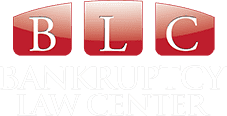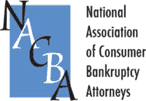In the current economic climate, it is not uncommon for small businesses to face financial challenges that threaten their solvency and long-term viability. As a result, these enterprises often resort to seeking relief through bankruptcy proceedings, which can entail considerable costs in terms of both time and resources.
However, by adopting prudent debt management strategies early on in their operations, small business owners may be able to avoid this undesirable outcome and ensure sustainable growth. This article aims to provide an overview of vital techniques designed to manage debt effectively while preserving cash flow stability.
One key aspect of avoiding bankruptcy for any business lies in maintaining a comprehensive understanding of its financial obligations at all times; such knowledge enables timely interventions aimed at mitigating potential risks before they escalate into insurmountable problems. Additionally, nurturing relationships with creditors should be considered as an invaluable tool for negotiating favorable repayment plans or restructuring existing ones when necessary.
In order to assist those who strive towards supporting local economies through entrepreneurship, this piece will elucidate various steps that could help fortify a company’s ability to withstand fiscal difficulties without resorting to bankruptcy protection filings.
Common Reasons Why Small Businesses Go Bankrupt
Numerous small businesses face the daunting prospect of bankruptcy, which can be attributed to several common factors.
Poor cash flow management often tops the list as it prevents business owners from accurately tracking their incomes and expenses, leading to financial instability.
Overspending on non-essential items or overestimating revenues also contributes significantly to a weak financial foundation.
Furthermore, external forces such as economic downturns may result in reduced demand for products and services, making it difficult for small businesses to maintain profitability.
In light of these challenges, adopting effective debt management strategies becomes crucial for sustaining operations and steering clear of insolvency.
The following section focuses on practical debt management strategies that entrepreneurs can employ to mitigate risks associated with falling into bankruptcy while fostering growth and stability within their organizations.
Debt Management Strategies For Small Businesses
Having examined the common reasons why small businesses go bankrupt, it is crucial for business owners to implement effective debt management strategies in order to evade such financial pitfalls.
One of the most important elements in managing small business debt is having a well-structured business budget that accounts for all expenses and revenue streams. This allows businesses to allocate resources efficiently, prioritize necessary expenditures, and avoid overspending.
Moreover, closely monitoring and managing cash flow can help maintain solvency by ensuring there are sufficient funds available to cover both expected and unexpected costs.
Another viable debt management strategy involves negotiating with creditors to possibly lower interest rates or extend repayment terms, potentially reducing the overall burden of outstanding obligations. In some cases, consolidating multiple debts into one loan with more favorable terms may be advantageous for simplifying repayments while lowering total interest outlays.
Ultimately, creating a strategic repayment plan tailored specifically to your company’s unique circumstances will enable you to systematically reduce your outstanding liabilities over time.
Whichever approach best suits your enterprise’s needs, proactively addressing financial challenges is essential for avoiding bankruptcy and fostering long-term success.
As we move forward in our discussion about mitigating small business insolvency risks, let us now explore the advantages of seeking professional assistance when navigating these complex fiscal matters.
Seeking Professional Help
In the midst of navigating the treacherous waters of business debt management, small business owners often find themselves floundering like ancient mariners lost at sea.
Seeking professional help from a bankruptcy attorney or financial advisor can be a beacon of hope in these tumultuous times.
These experts possess the knowledge and experience necessary to guide businesses through effective debt management strategies, ultimately steering them clear of potential bankruptcy.
Selecting the right professional for one’s specific needs is crucial in ensuring that assistance received aligns with the overall objectives of avoiding bankruptcy and maintaining long-term financial stability.
Small business owners should consider factors such as an individual’s track record, industry expertise, client testimonials, and service offerings when evaluating their options.
By seeking professional help early on in their journey towards more efficient business debt management, entrepreneurs can harness valuable insights and resources tailored to their unique circumstances, while fulfilling their innate desire to serve others by preserving jobs and contributing positively to local economies.
The investment made in securing expert guidance not only safeguards against impending financial ruin but also fortifies the foundation upon which future success may flourish.
Frequently Asked Questions
Early warning signs that a small business may be heading towards bankruptcy can manifest in various aspects of operations and financial management.
One critical indicator is consistent cash flow problems, which could result from declining sales or increasing expenses.
The inability to meet financial obligations on time, such as loan payments or vendor invoices, further exacerbates liquidity issues and potentially tarnishes the company’s reputation.
Another red flag involves repeated reliance on short-term debt solutions to cover ongoing operational costs, signaling a lack of sustainable revenue generation.
Additionally, an unmanageable debt-to-equity ratio reflects excessive borrowing compared to ownership stakes, impeding long-term solvency prospects.
Frequent disputes with creditors or suppliers may also underscore strained relationships due to non-payment or delayed reimbursements.
Lastly, inadequate record-keeping practices hinder accurate assessment of financial performance and obscure potential areas for improvement.
By recognizing these early warning signs, small businesses can proactively address underlying issues and mitigate the risk of bankruptcy through targeted intervention strategies.
A staggering 82% of small businesses fail due to cash flow issues, with personal debts and liabilities playing a significant role in jeopardizing the financial stability of these enterprises.
Personal debts can impact a small business’s financial health by diminishing its ability to secure loans, maintain positive credit ratings, and access working capital for growth opportunities.
To manage personal debts effectively and safeguard the enterprise from potential risks, it is crucial to separate personal finances from those of the business by establishing distinct accounts and drawing clear boundaries between them.
Additionally, implementing sound debt management practices such as negotiating favorable terms with creditors, prioritizing high-interest debts, creating realistic budgets, and exploring alternative financing options can contribute significantly towards mitigating the negative consequences of personal liabilities on the overall financial well-being of a small business.
Balancing the need to invest in a small business’s growth while maintaining a manageable debt level requires strategic financial planning and discipline. Prioritizing investments that yield high returns or improve operational efficiency, implementing cost-saving measures, and continuously monitoring cash flow are essential steps in achieving this balance.
Additionally, utilizing various financing options like equity financing, grants, or crowdfunding can help reduce the reliance on debt for funding growth initiatives. Regularly reviewing financial statements and adjusting strategies accordingly will enable business owners to maintain a healthy debt-to-equity ratio, ensuring long-term sustainability and reducing the risk of bankruptcy.
Navigating the choppy waters of debt can be challenging for small businesses, but alternative financing options can offer a lifeline to alleviate debt pressure without resorting to bankruptcy.
One such option is invoice factoring, which allows a business to sell its accounts receivable at a discount in exchange for immediate cash.
Additionally, peer-to-peer lending platforms connect borrowers and investors directly, bypassing traditional banks and potentially offering more favorable terms.
Crowdfunding campaigns are another avenue that harnesses the power of community support to raise funds without increasing business indebtedness.
Finally, obtaining grants or participating in startup accelerator programs may provide both financial resources and valuable mentorship opportunities for struggling enterprises seeking sustainable growth while managing their existing debt burden.
These alternatives can not only help businesses stay afloat but also contribute positively to society by creating jobs and fostering economic development.
Effectively communicating with creditors and suppliers to negotiate more favorable repayment terms is crucial for businesses seeking to avoid bankruptcy.
Establishing an open and honest dialogue with these stakeholders allows organizations to demonstrate their commitment toward fulfilling financial obligations while providing insight into current challenges faced by the company.
It is essential to present a well-prepared proposal outlining revised payment schedules, potential interest rate reductions, or extended grace periods that could alleviate immediate financial strain.
By proactively engaging in transparent negotiations, businesses can foster stronger relationships with key partners and increase the likelihood of securing mutually beneficial agreements that prevent insolvency.
Conclusion
In conclusion, small businesses must remain vigilant in identifying early warning signs of potential bankruptcy and implement effective debt management strategies to ensure financial stability.
By managing personal debts, balancing investments with manageable debt levels, exploring alternative financing options, and maintaining open communication with creditors and suppliers, small business owners can prevent the need for bankruptcy.
An interesting statistic to note is that 82% of small businesses fail due to cash flow problems (source: Visual Capitalist).
Thus, employing these strategies not only aids in avoiding bankruptcy but also contributes significantly towards the overall success of a small enterprise by ensuring healthy cash flow management.








